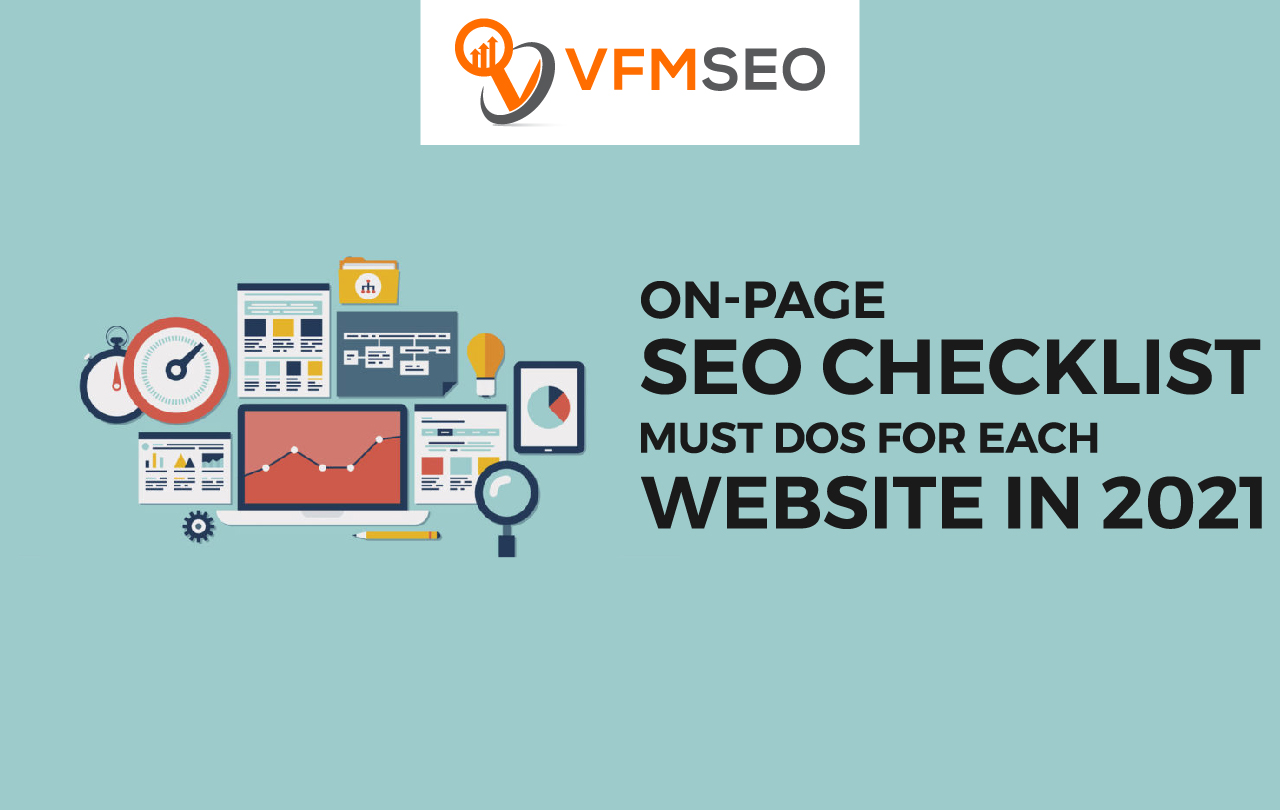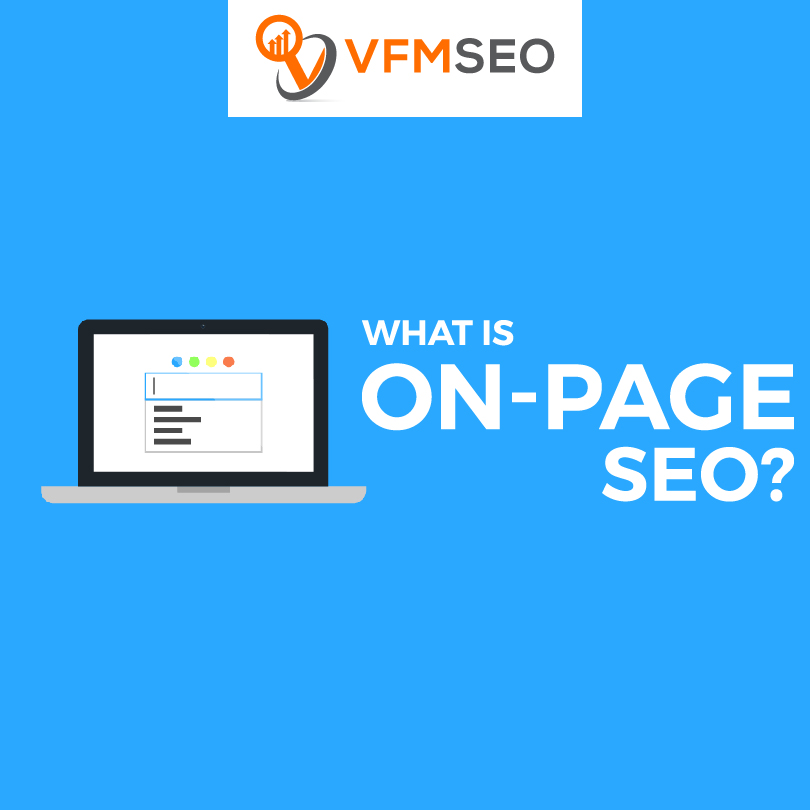
On-Page SEO Checklist – Must Dos for Each Website in 2021
Exploring to know On-page SEO Checklist? To help blog posts and pages increase search visibility, you need to use on-page SEO to attract search engines and help them understand, recognize, and rank your content.
To help you through that process, we built an on-page SEO checklist. That way, you never miss a chance to optimize your webpages or blog posts.

What is On-Page SEO?
On-page SEO optimizes individual pages of content to earn better ranks in search and drive relevant traffic. It includes tactics that improve a single page rank for a primary target keyword.
While on-page SEO relates to optimizing a single page of content, it is also supported by other SEO types. On-page SEO alone may not be sufficient to get a page to rank. You also need an off-page and technical SEO strategy to help your overall site look more engaging to search engines if you want to get a page of content to rank.
The rest of this post covers a 33-point on-page SEO checklist, plus important off-page and technical SEO tactics you need to support your on-page efforts.

On-Page SEO Checklist – Tips & Techniques
Use Concise Page Titles & H1 Tags
The title is one of the most essential on-page SEO factors. Your title tags are one of the things that web crawlers check through in your site to determine your page vis-a-vis search query’s intent.
Make your titles unique and eye-catching. It should also be descriptive and brief (about 600 pixel-width) and should encapsulate what your page is all about. Take note, and title tags should include the primary keyword you’ve set for the page.
Do not forget to wrap your title in an H1 title tag — a portion of HTML code that tells search engines that the copy you wrapped is the page’s title copy and an essential element in your content.
Use Descriptive and SEO-friendly URLs
Every page of your website has an individual URL. Think of it is as your online address. Avoid utilizing special characters in your URL and keep it short, around a maximum of 5 words.
Your URL should include your primary keyword. It may have a small impact on your SERP ranking, but it’s worth the effort as doing so will make it easy for both users and search engines to read and remember your URL.
Have a Compelling Meta Description
Meta descriptions are the tiny snippet of text that best describes your page’s content on the SERP. It helps your result stand out, and reading it should explain what to expect from the article. For writing your Meta descriptions, make sure to be detailed, but keeping in mind the 928-pixel width limit.
It is ideal to mention your principal keyword in the first part of your copy, as well as a strong and compelling call to action to encourage readers to click, read, or learn more about your content.
Use Subheadings and Header Tags
For a better user experience, it is ideal that you include subheadings in your content. Doing so will allow you to have your keywords in your content. Moreover, it will make your content more comfortable to scan.
Since people nowadays don’t have the patience to read through your article, subheadings serve as roadmaps to help your readers get an overview of your content and quickly find the information they need. Remember to divide your content into logical and scannable chunks that your readers can easily digest.
Also, related to what you will do to your page title, do not forget to wrap your subheadings in the H2, H3, and so on tags of your HTML code. This will inform search engines that the copies you wrote are essential and related to your page’s topic.
Be Cautious of Keyword Placements
It is best practice to place your keywords on your page’s title, URL, Meta descriptions, subheadings (if possible), and in the first 100 words of your content.
Placing your keywords on those critical on-page factors will help Google quickly understand what your page is all about. It is best to utilize ativan 2 mg tablet online buy your keywords 2 to 3 times per hundred words. But don’t fuss about it; placing keywords naturally and as seamlessly as possible is the goal.
However, beware of keyword stuffing dangers — bombarding your content with your primary keywords to manipulate your site’s ranking in SERPs. Place your keywords as consistent and seamless as possible in your content.
Provide Good User Experience (UX).
You need users to have a seamless experience while visiting your website. A lot of factors contribute to a good user experience. To give you an idea, these factors include:
- Making your content easy to understand;
- Ensuring that all your links are working;
- Improving your site’s loading speed; and
- Having a responsive design.
If a user uses mobile for browsing, it will be pleasing if the font type, size, and color are readable. Make sure that the buttons on your website are not too large or too small. If your site is challenging to navigate, your bounce rate will increase, yielding bad results for your website’s performance.
Place Internal Links in Your Content
Internal links are links in your content that are connected to different pages or articles within your website. Using internal links is like making a trail for users to explore your page, producing higher traffic on your site.
Moreover, adding several internal links on your page will increase dwell time on your website. Crawlers also use links to transfer from one page to another and to find new web pages. That is why it is ideal for including internal links on your pages.
When adding internal links on your page, make sure you use clear, relevant, and descriptive anchor texts. This will help the reader get a fair grasp of what that link is all about and how it relates to your page.
Do the Necessary Image Optimizations
Using images in your content will make the details you present easier to understand and makes your page interesting. It also provides to your page’s overall ranking in SERPs. It is ideal for adding the keyword in your image file name, title, and alt text.
Use Alt tags. These are the words that appear when an image fails to upload correctly on your page. It is used to define the image and how it is connected to your content. Crawlers also use this to index your image perfectly.
Satisfy Search Intent
There are four primary categories of search intent:
- Informational – how-tos, tutorials, and guides.
- Transactional – making a buying or already decided buyer.
- Comparison – matching different products and still weighing in options.
- Navigational – finding a particular website or even looking for a specific service.
Make sure that your content pleases the search intent of your website visitor. If your user’s intent is searching for the similarities and variations of two products, your content should not be geared towards making a sale. To make sure you made it right, check our guide on understanding search intent.
Use Modifiers in Your Titles and Keywords
Adding modifiers help form long-tail keywords. Meaning, aside from your primary keyword, you can be ranked for other variations, thus improving organic traffic on your website. Modifiers also appear in voice searches.
Write a Good Introduction
If you lose the users in your intro, you’ve lost them for good. Writing an introduction that will pique the reader’s interest is crucial to ensure user engagement.
To avoid users from pogo-sticking from page to page, hook them with a compelling intro that will make them stick around for the whole article. Remember that no matter how great your content is, the audience will not be able to see it if they’re already gone in the opening.
Write Relevant, Quality, Long-Form Content
In a study conducted by SEMrush, long-form content with more than 3000 words has more traffic, more social shares, and more backlinks. what happens if your content doesn’t perform?
Ideally, longer posts are better (1,000 to 2,000 words) because it attracts more backlinks and increases your page’s authority and ranking in SERPs. Your content should be high-quality, original, and relevant. The details you disseminate should be related to your goal category of search intent.

